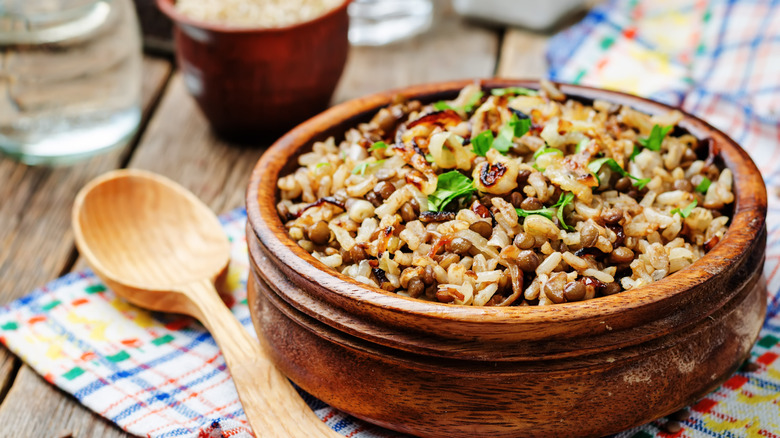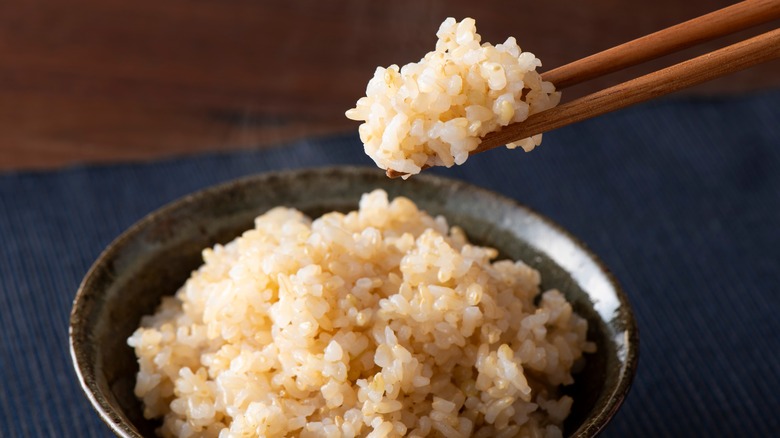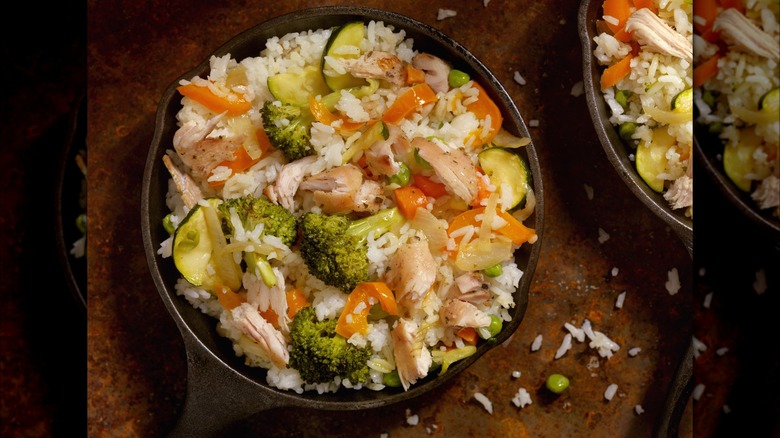$2 Rice Mixes Are Actually Incredibly Overpriced
At a glance, $2 for a box of seasoned rice seems like a pretty good deal. However, it isn't actually the most cost-effective option at the grocery store, especially if you use rice as a side or meal on a regular basis. A $2 box might contain only two and a half servings, ultimately costing about $0.80 per serving. On the other hand, you could spend nearly twice as much on a 50-serving bag of plain, uncooked rice. At about $0.08 per serving, that's inarguably a much better deal.
Sure, this minuscule price per serving doesn't account for the spices, veggies, or proteins you might want to add for additional flavor, but you likely already have the essential spices you need at home. What's more, if you were already planning to add veggies or proteins to your boxed rice, these mix-ins aren't an unplanned additional expense. Now, that's what we like to call smart shopping.
Boxed rice comes at a high cost – in many ways
As you can imagine, a large part of the reason boxed rice mixes are more expensive than bagged raw rice is that the latter goes through much less processing. Raw rice is removed from its hulls, at which point it can either be packaged for consumers or continue down the line. If it moves on, the rice is cooked and dehydrated again, then boxed, and marked up.
Though undoubtedly more convenient than raw rice, boxed rice still requires a bit of work to rehydrate for consumption, and the stirring involved is a one-way ticket to disappointing texture. Who wants to eat mushy rice? Not us. To make matters worse, the multiple levels of processing strip rice of its nutritional value and flavor. Raw rice, on the other hand, retains nearly all of its nutritional value. As such, raw rice doesn't need to be enriched with niacin, folic acid, thiamine, iron, and other nutrients because these are naturally occurring.
Boxed rice limits your nutritional choices
Stripping rice of its natural nutrients and replacing them artificially is one thing; adding extra — often unnecessary — nutrients is another. The most common additive is sodium, included for both flavor and preservation. However, just a single serving of that $2 boxed rice can contain upwards of 650 milligrams of sodium. Even if you forgo the seasoning packet, that sodium is still cooked into the rice with no chance of extraction.
Conversely, if you were to start from scratch with raw rice, you have better control over how much sodium or other nutrients go into your meal. You could even replace half of your salt with soy sauce for the ultimate mix of salty, sweet, bitter, and umami. So, yes, raw rice is a larger investment of time and money upfront, but it's endlessly customizable in terms of both flavor and nutrition. Besides, who wants to eat instant rice with the same seasonings every single day?



